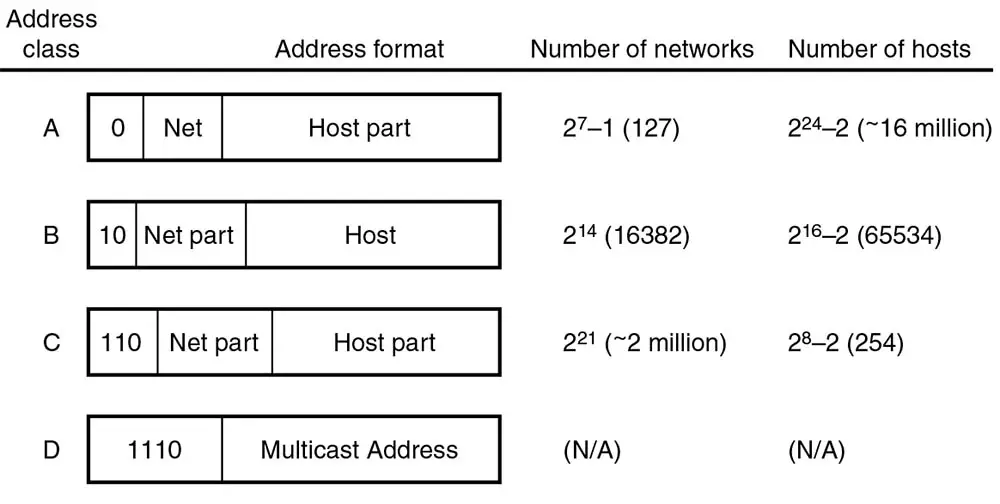Lesson 7
TCP/IP Features (Conclusion)
In this module, you learned about some of the advanced TCP/IP features available in Windows to optimize network efficiency.
We started with a discussing on subnetting and supernetting, and moved on to consider routing protocols. You learned the factors that you should consider in designing a WAN connection, and the effects of WAN connections on TCP/IP issues
and application performance. Finally, we covered concepts in QoS that allow you to control how bandwidth is allocated on your
network. Now that you have completed this module, you should be able to:
- Define the methods of optimizing the number of available IP addresses
- Define how to optimize IP performance on a network
- Determine the number of subnets and IP addresses used by remote network segments
- Define how QoS enhances network performance
- Define the process of setting up QoS connections
Subnetting
The original IP specification (RFC 790) defines three major address classes, which identify the ways in which an IP address is split into a network number and a host identifier. The format of each address class determines the number of networks available in that class and the number of hosts that can be attached to each network. RFC 988 defines an additional address class, D, which is used for multicast (described later in this chapter). The format of the four address classes and the number of networks and hosts for each class are shown in Figure 5-7.1.

IP Address Classes
The IP address classes are not a good match with some network architectures.
For example, if a network segment with 400 computers uses a Class B address that can accommodate more than 65,000 computers,
the segment wastes more than 99% of the available addresses. Subnetting (as described in RFC 950, RFC 1878, RFC 1519) is a technique for dividing Class A, B, or C addresses into smaller groups of IP addresses that more closely match the addressing requirements for network segments. In a subnetted network, the part of an IP address to the right of the network number is split into a subnet address and the host identifier. The subnet address locates the network segment within the collection of segments that share the same network number, and the host identifier identifies the specific host on that network segment. Figure 5-7.2 illustrates the format of a subnetted IP address.
In the original IP addressing scheme, the division between the network address and the host identifier is defined by the first three bits of an IP address. How is the format of a subnetted IP address defined? Each subnetted address must have an associated subnet mask, which identifies which bits of the address make up the subnet address and which are used as the host address. A subnet mask is a 32-bit number with a 1 in every bit from the IP address that is to be used as the network number or the subnet address and a 0 in every bit from the IP address that is to be used as the host identifier.
In the original IP addressing scheme, the division between the network address and the host identifier is defined by the first three bits of an IP address. How is the format of a subnetted IP address defined? Each subnetted address must have an associated subnet mask, which identifies which bits of the address make up the subnet address and which are used as the host address. A subnet mask is a 32-bit number with a 1 in every bit from the IP address that is to be used as the network number or the subnet address and a 0 in every bit from the IP address that is to be used as the host identifier.

New terms
Here are some terms that might be new to you:
- Network Address Translation
- (BGP) Border Gateway Protocol: A routing protocol designed for use between autonomous systems. BGP is especially useful for detecting routing loops.
- Packet assembler-disassembler (PAD): A network device used on X.25 internetworks.
TCP/IP Design - Quiz
Click the Quiz link below to test your understanding of optimizing TCP/IP design for performance.
TCP/IP Design - Quiz
TCP/IP Design - Quiz